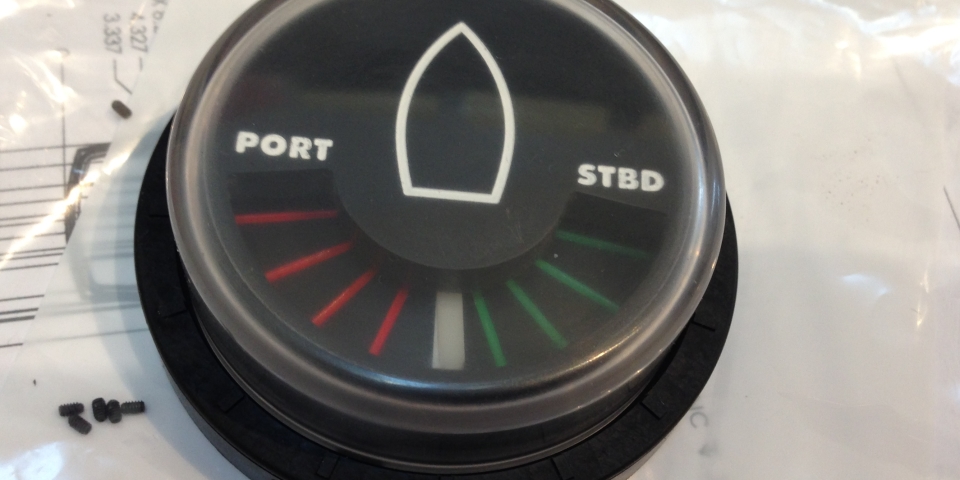Ross Zimmerman came to Pongratz Engineering with an idea. He explained that when moving a boat in and out of berth, drawing alongside another vessel, or other close maneuvers, having an instant visual reference of rudder angle is critical to preventing accidents. He was interested in creating a prototype of a new kind of rudder indicator.
Currently there are two types of rudder position indicators on the market: low cost, weight-based indicators and high-cost electronic ones. The low-cost position indicators, which are mounted on the wheel, have a pointer on the top of the device that swings with each revolution of the wheel. The pointer is always on the top of the device and doesn’t give the rudder’s position relative to the boat, making it more difficult to determine the exact trajectory of the boat. The electronic indicators will specify the rudder’s position relative to the boat, but with price tags that run from around $200 to $1,300, they can be out of a casual boater’s price range. Ross saw an opportunity to improve on the low-cost weighted indicators without adding expensive electronics. He tasked Pongratz Engineering with creating a functional prototype of a new rudder indicator that he could show to potential investors.
The Process
Pongratz Engineering started the design process by brainstorming ideas for how to control the dial without using electronics. After exploring several options, we determined that mounting to the wheel and using gravity to control the dial movement, as current products do, was the best option for a low-cost solution. We analyzed products on the market to find pitfalls that we could improve upon.
Ross’s main complaint was that the weight-based indicators do not show a rudder’s position relative to the boat. To address this issue, Pongratz designed a gear train to translate one revolution of the wheel to an angular movement of a dial on the front face of the device. Another issue with currently available weighted indicators is they can easily become uncalibrated if the pilot spins the wheel too fast. When this happens, the pilot has to physically remove the device from the wheel, recalibrate, and then attempt to reattach the indicator to the wheel using the old adhesive. However these adhesives are designed for one time use and lose their adhesive properties the more times the indicator is recalibrated.
Our Solution
We addressed this issue in two ways. First, we increased the weight on the dial, so it would respond to gravity more quickly. This additional weight also allowed the device to operate on wheels angled up to 30 degrees, a feature that current products cannot do. We also added a ‘calibration dial’ that allowed users to change the dial position, if it did become uncalibrated, without removing the device from the wheel.
Pongratz fabricated several FDM prototypes during the design process to show Ross the product’s overall shape and to validate the calibration dial. The gear train, which was too small and detailed to be printed, was validated by Pongratz Engineering utilizing tools built into the SolidWorks software.
The next step was to create a functional prototype. Though the final parts would be injection molded, the functional prototype was made of machined parts, to save on up-front costs. When the machined parts arrived, Pongratz Engineering evaluated and assembled them into a functional prototype, which worked exceptionally well. Ross was able to use this prototype on his boat the following summer.
Have an idea for something you’d like to test out? Pongratz Engineering can help. Visit our website at www.pongratz-engineering.com or call us at 612-384-0122.
NEXT UP: Injection molded Prototype Parts
Related Posts:

